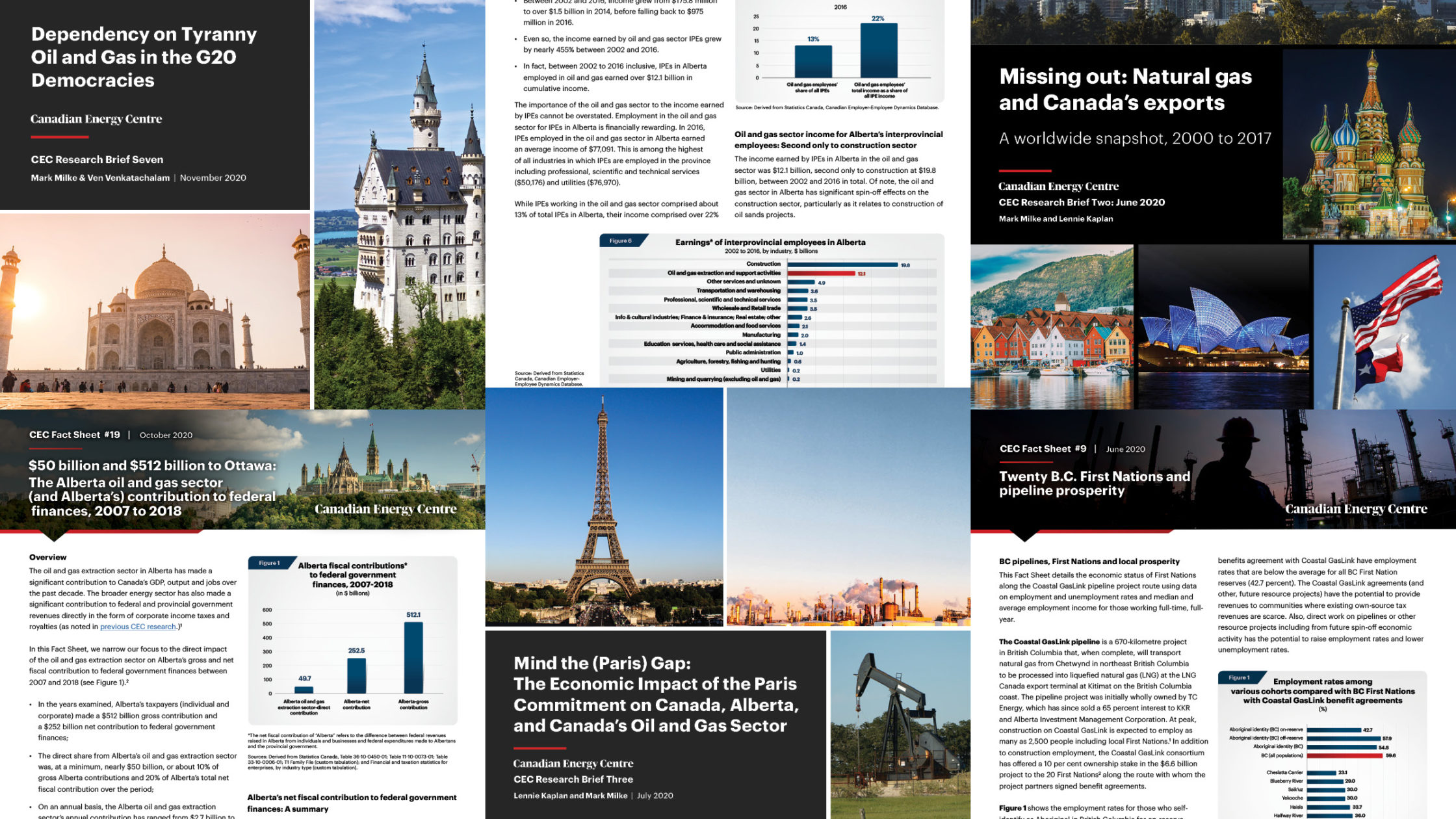There’s no shortage of opinions about Canada’s energy sector. But in many cases, the discussions are not as informed as they could be.
Over the past year, the Canadian Energy Centre’s research staff has “deep-dived” into the data about one of Canada’s central industries. The Centre has scoured data from Statistics Canada, the International Energy Agency, the US Energy Information Administration, Freedom House, Eurostat and other domestic and international statistical agencies. That has allowed the Canadian Energy Centre to compile original reports that highlight multiple facets of Canada’s energy sector and also provide critical comparisons to other countries on everything from employment and the environment to investment trends and which energy-producing countries score high on human rights.
Combing through seven Research Briefs and 23 Fact Sheets released in 2020, the CEC has prepared 75 key facts about Canadian oil and gas to help inform conversations about the industry.
The full list can be downloaded here, complete with associated data charts. All of the CEC’s research can be found at canadianenergycentre.ca/research.
Here are some of the key themes and findings from our Top 75 list:
The oil and gas industry is a key economic contributor to Canada
- Canada’s energy industry paid over $672 billionin federal, provincial and local taxes, royalties and fees since 2000 – enough to pay off the currently projected federal deficit almost twice over.
- Since 2000, Canada’s oil and gas sector alone paid over $493 billion to federal, provincial, and local governments, more than the next two top industries – real estate and construction – combined.
- Even during the 2016 downturn, the oil and gas industry’s share of Canada’s GDP was twice the size of the automotive industry and more than four times the size of the aerospace industry.
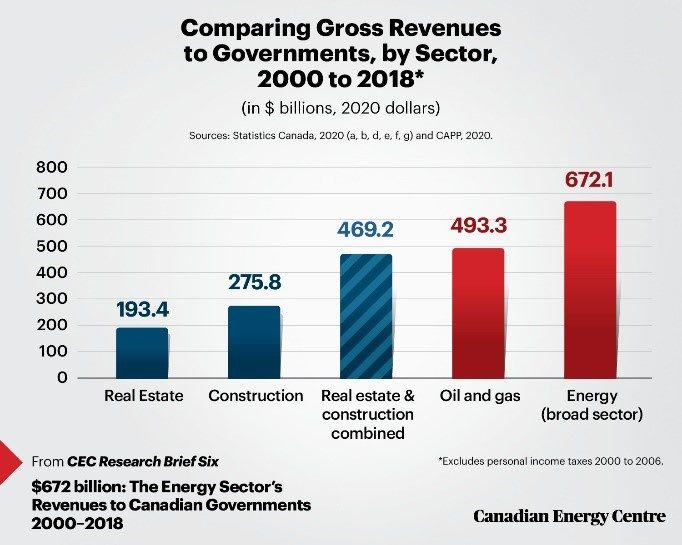
Oil and gas is a truly CANADIAN industry
- Oil and gas creates jobs and fuels the economy from coast to coast.
- In Ontario, the industry supported over 68,000 jobs in 2016, directly and indirectly, paying more than $2.1 billion in wages and salaries. The sector also was responsible for adding $7.3 billion in nominal GDP to Ontario’s economy.
- It was a similar story in B.C., with nearly 57,000 jobs supported, $2.3 billion in wages and salary and $7.7 billion in nominal GDP. Likewise in Atlantic Canada, supporting some 27,000 jobs, paying more than $1.6 billion in salaries and wages and adding $6.3 billion in nominal GDP.
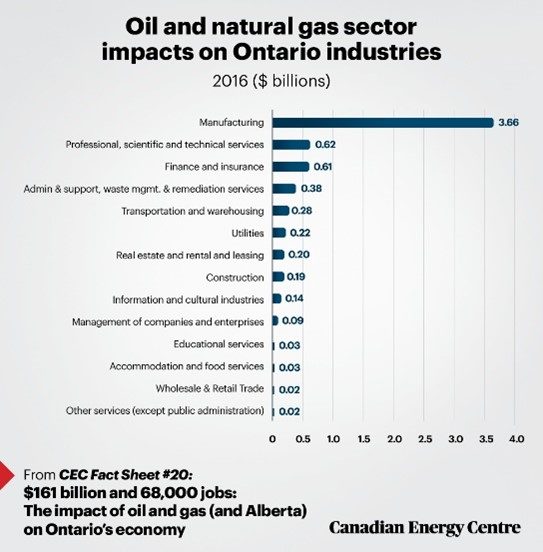
The oil and gas industry is a global ESG leader
Canada’s oil and gas sector punches above its weight when it comes to protecting the environment.
- Despite producing only 0.3 per cent of global GHG emissions, Canada’s oil and gas sector accounted for 52 per cent of environmental protection spending by all Canadian industries between 2000 and 2016.
- Oil sands emissions intensity has gone down 22 per cent since 2011, while oil sands producers recycle up to 96 per cent of water used in their operations.
- Emissions from natural gas flaring have dropped 38 per cent since 2014, even as natural gas production increased by 22 per cent.
- According to a 2020 analysis by BMO Capital Markets, Canada is number one among major oil and gas reserve holders on environmental, social and governance measures.
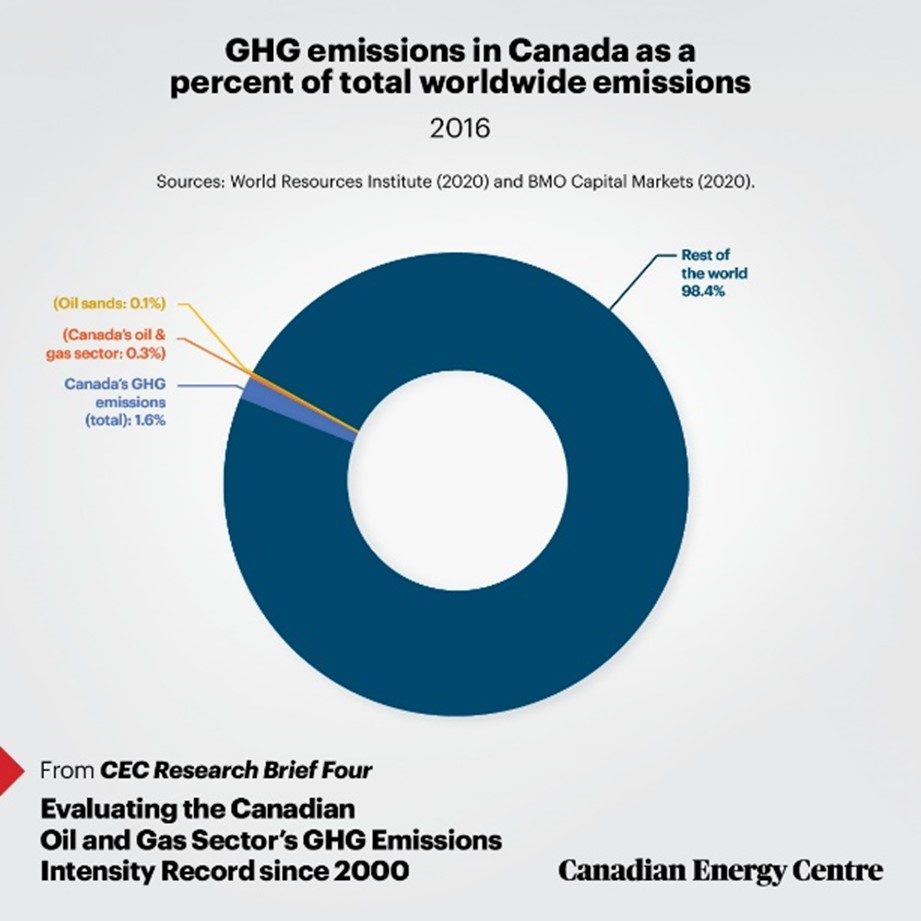
Indigenous involvement and benefits
Despite a consistent narrative to the contrary, Indigenous communities have largely supported the oil and gas industry.
- For example, almost all B.C. First Nations with a publicly available position on oil and gas support the responsible development and extraction of fossil fuel resources. In Alberta, 100 per cent of First Nations with publicly available positions support both oil and natural gas development.
- Indigenous people in Canada’s oil and gas sector have lower unemployment rates and higher incomes. As well, the oil and gas industry pays Indigenous Canadians better than any other major industry.
- The oil and gas industry employs a greater proportion of Indigenous Canadians than any other major industry – more than double the automotive and aerospace sectors combined.
- Oil and gas producers have spent more than $13 billion with Indigenous businesses since 2012.
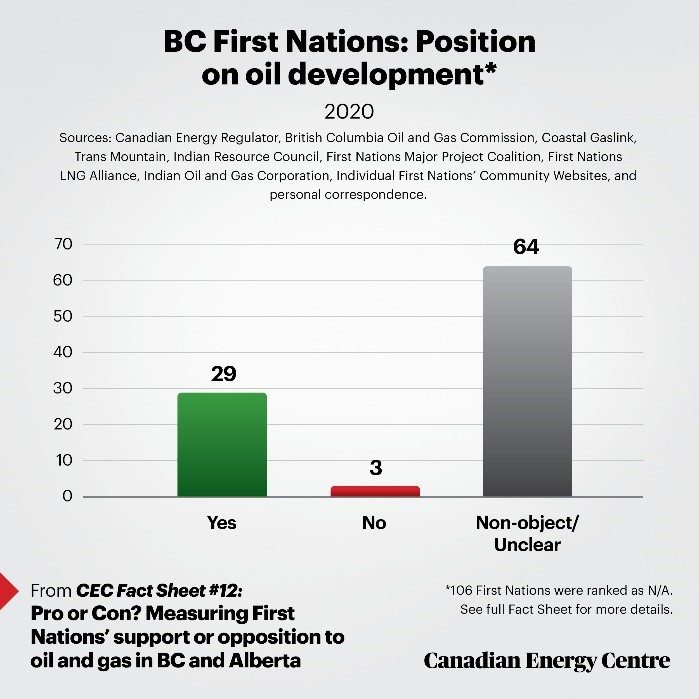
Click here for the full Reference Guide. You can also find other facts about Canadian energy here: canadianenergycentre.ca.
